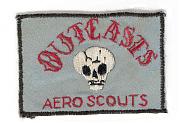Guys--
You have produced a stimulating set of posts - thanks Rob for starting it. Let me drop back to the notion of levels of war for a few comments:
1. Not so very long ago, the US military saw only 2 levels of war - strategic and tactical. Some "visionaries" and/or historians kept mucking things up by pointing out that there was an intermediate level that, in the West, was often called Grand Tactics. The Soviets wrote a lot about that intemediate level and called it the operational level and we later adopted that name.
2. By the time I was teaching full time at Leavenworth (1992) we were teaching from a vertical Venn diagram that showed an overlap between the strategic and operational and the operational and tactical. We also had developed some terminology to address the overlaps - one was the Theater Strategic level. CTAC kept trying to oversimplify and equate levels of war with formations: thus, the operational level ran from the unified command down to the corps. (My boss in SWORD, COL Bob Herrick, related levels of war and troop formations by saying that the operational level could be defined in terms of a troop formation that could conduct operations relatively independently over time. That might be a regiment, brigade, division, corps, etc. In El Salvador by that approach, the operational level of war conducted by the ESAF was by Brigade, Military Detachment, and Immediate Reaction Bn formations - COL level commands.)
3. For me, the levels of war remains a useful concept in the conduct of COIN. I see a US national strategic level of war in both Iraq and Afghanistan where the National Security apparatus is trying to define objectives, appropriate COA, and provide the resources to achieve those objectives. I see the HN as trying to do the same thing with a key issue being the lack of congruence between US and HN objectives. At the Theater Strategic level in Iraq, the issue is how GEN Petraeus and AMB Crocker implement a strategy to achieve US objectives - some of which they have to define on the ground. My reading of Kilcullen is that the Anbar Awakening provided an opportunity to develop a new set of COA to achieve both military and political objectives. It also raised new issues at both the strategic and operational levels for the Iraqi government - problems, challenges, and opportunities.
I'm running out of gas, so I'll stop here. So much for my 2 cents!
Cheers
JohnT





 Reply With Quote
Reply With Quote

 ) an artificial creation in that it says a clever enemy fights your weaknesses not your strengths. Only dead enemies match strengths and then not for long. I admit this gets back into the 4GW argument etc but wise warriors have always sought out the soft spots to slip in the blade.
) an artificial creation in that it says a clever enemy fights your weaknesses not your strengths. Only dead enemies match strengths and then not for long. I admit this gets back into the 4GW argument etc but wise warriors have always sought out the soft spots to slip in the blade.




 . Yet, in both cases there was adequate warning of what was faced and it was ignored by the Army's power structure. In fairness, Iraq was hobbled by abysmal intelligence preparation (due to many and long standing politically induced problems) but it still took 18 months to realize we'd screwed the pooch. That it took another 18 months to turn things around is progress over Viet Nam where it took a total of seven years to do that but it still is too long. I submit a part of that length of time was due to efforts to over intellectualize the need and solutions. IOW, we needlessly complicated it -- and I know the domestic and in-theater political aspects also contributed to that delay.
. Yet, in both cases there was adequate warning of what was faced and it was ignored by the Army's power structure. In fairness, Iraq was hobbled by abysmal intelligence preparation (due to many and long standing politically induced problems) but it still took 18 months to realize we'd screwed the pooch. That it took another 18 months to turn things around is progress over Viet Nam where it took a total of seven years to do that but it still is too long. I submit a part of that length of time was due to efforts to over intellectualize the need and solutions. IOW, we needlessly complicated it -- and I know the domestic and in-theater political aspects also contributed to that delay. 
 , opting instead to accept 'It depends' as an answer I could live with.
, opting instead to accept 'It depends' as an answer I could live with. 





Bookmarks